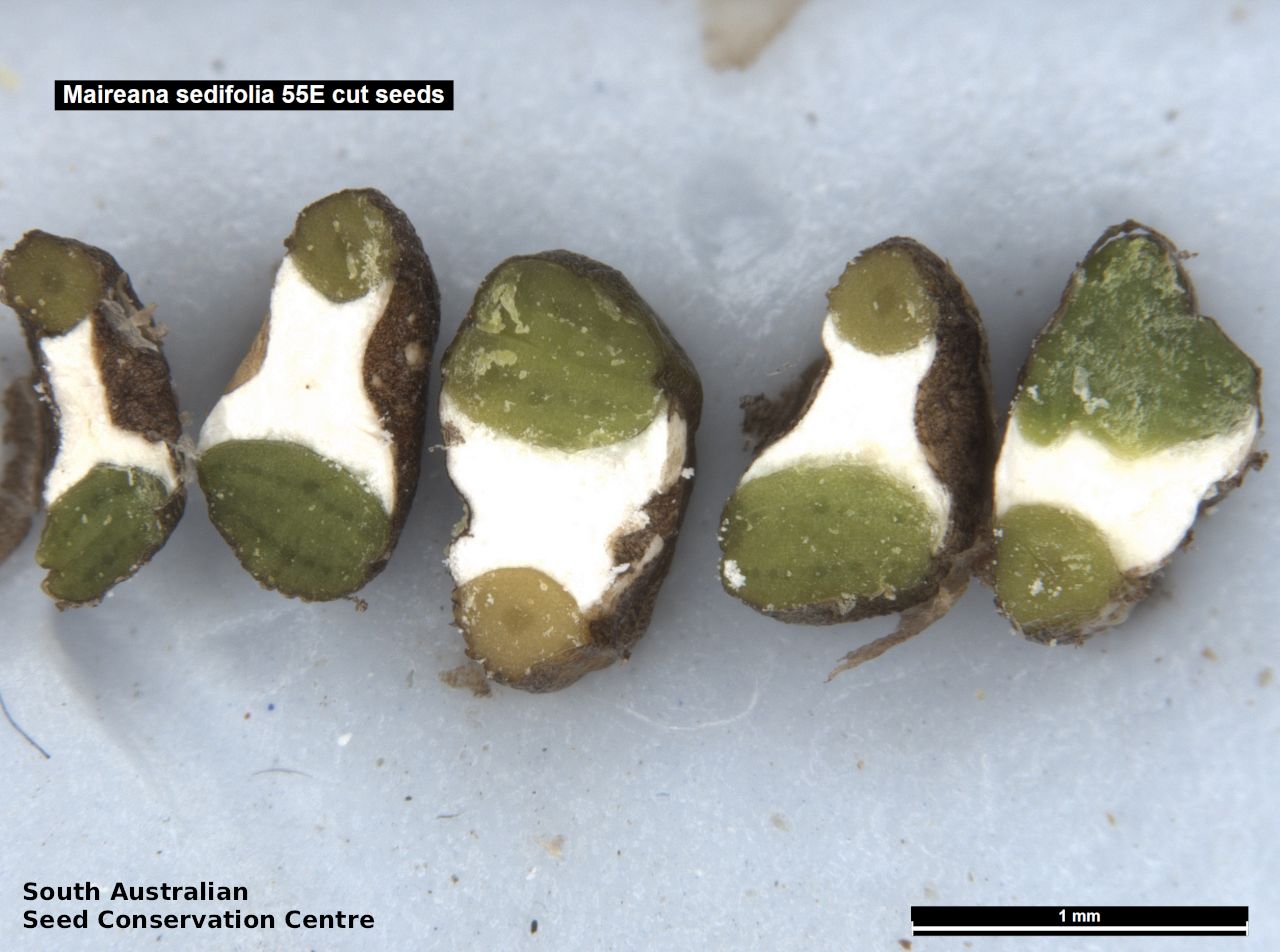Display all 17 images

















Regional Species Conservation Assessments per IBRA subregion.


Least concern
Near threatened
Rare
Vulnerable
Endangered
Critically endangered
Extinct
Data deficient
Adelaide
Arkaroola
Ceduna
Coober Pedy
Hawker
Innamincka
Marla
Marree
Mount Gambier
Oodnadatta
Renmark
Wudinna
Keith
Yunta
Display IBRA region text
| Broughton (FLB02) | Flinders Lofty Block | Least Concern |
| Olary Spur (FLB03) | | Least Concern |
| Southern Flinders (FLB04) | | Near Threatened (Definite Decline) [Severe loss of habitat, grazed, little regeneration] |
| Northern Flinders (FLB05) | | Least Concern [grazed] |
| Central Flinders (FLB06) | | Least Concern [grazed] |
| St Vincent (EYB02) | Eyre Yorke Block | Least Concern (Probable Decline) [persists on roadsides & remnants] |
| Eyre Hills (EYB03) | | Near Threatened |
| Eyre Mallee (EYB05) | | Least Concern |
| South Olary Plain (MDD01) | Murray Darling Depression | Least Concern |
| Murray Mallee (MDD02) | | Least Concern |
| Braemer (MDD07) | | Least Concern |
| Murray Scroll Belt (RIV06) | Riverina | Rare (IUCN: RA d(i,ii)) |
| Myall Plains (GAW01) | Gawler | Least Concern |
| Gawler Volcanics (GAW02) | | Least Concern |
| Gawler Lakes (GAW03) | | Least Concern |
| Arcoona Plateau (GAW04) | | Near Threatened |
| Kingoonya (GAW05) | | Least Concern |
| Roxby (GAW07) | | Least Concern |
| Commonwealth Hill (GAW08) | | Least Concern |
| Maralinga (GVD03) | Great Victoria Desert | Least Concern |
| Tallaringa (GVD05) | | Near Threatened |
| Yellabinna (GVD06) | | Least Concern |
| Carlisle (NUL01) | Nullarbor | Least Concern |
| Nullarbor Plain (NUL02) | | Least Concern |
| Yalata (NUL03) | | Least Concern |
| Hampton (HAM01) | Hampton | Least Concern |
| Barrier Range (BHC01) | Broken Hill Complex | Least Concern |
| Barrier Range Outwash (BHC04) | | Least Concern |
| Bimbowrie (BHC05) | | Least Concern |
| Curnamona (BHC06) | | Least Concern |
| Warriner (SSD04) | Simpson Strzelecki Dunefields | Rare (IUCN: RA d(ii)) |
| Strzelecki Desert (SSD05) | | Rare (IUCN: RA d(ii)) |
| Breakaways (STP01) | Stony Plains | Least Concern |
| Oodnadatta (STP02) | | Rare (IUCN: RA d(ii)) [edge of range] |
| Murnpeowie (STP03) | | Near Threatened (Probable Decline) [Grazing, edge of range] |
| Baltana (STP07) | | Rare (IUCN: RA d(ii)) [edge of range] |
| Everard Block (CER03) | Central Ranges | Rare (IUCN: RA d(i,ii)) |
| 5 of 6 subregions | Flinders Lofty Block | Least Concern , Near Threatened |
| 3 of 5 subregions | Eyre Yorke Block | Least Concern , Near Threatened |
| 3 of 6 subregions | Murray Darling Depression | Least Concern |
| Murray Scroll Belt (RIV06) | Riverina | Rare (IUCN: RA d(i,ii)) |
| 7 of 8 subregions | Gawler | Least Concern , Near Threatened |
| 3 of 4 subregions | Great Victoria Desert | Least Concern , Near Threatened |
| 3 of 3 subregions | Nullarbor | Least Concern |
| Hampton (HAM01) | Hampton | Least Concern |
| 4 of 4 subregions | Broken Hill Complex | Least Concern |
| 2 of 4 subregions | Simpson Strzelecki Dunefields | Rare |
| 4 of 7 subregions | Stony Plains | Least Concern , Near Threatened , Rare |
| Everard Block (CER03) | Central Ranges | Rare (IUCN: RA d(i,ii)) |
Botanical art
Kath Alcock paintings: 3
Prior names
Kochia sedifolia
Common names
Pearl Bluebush
Bluebush
Etymology
Maireana, named after Adolphe Lemaire, a 19th century French botanist and 'sedifolia', meaning 'Sedum-shaped' leaves.
Distribution and status
Grows on calcareous soils, frequently on rises
Herbarium regions: North Western, Lake Eyre, Nullarbor, Gairdner-Torrens, Flinders Ranges, Eastern, Eyre Peninsula, Murray, Yorke Peninsula
AVH map: SA distribution map (external link)
Plant description
Compact, divaricately branched shrub to 1.5 m high; covered with a close bluish-grey woolly tomentum; dioecious. Leaves alternate; fleshy, narrowly obovoid, 4-8 mm long. Flowers in pairs but usually only one maturing, closely woolly, the male hemi-spherical and the female globular. Flowering all year. Fruits are fruiting perianth straw-coloured or pale-brown when dry; tube sparsely hairy, turbinate, to 2 mm high; horizontal wing c. 10 mm diam., glabrous, faintly veined, with a radial slit Seeds are seeds are brown and disc shaped, up to 1.5 mm diameter with overlapping embryo tip forming a small beak. Seed embryo type is peripheral
Seed collection and propagation
Collect seeds between November and February. Collect seeds when fruits are brown and papery. Check inside several fruits for the presence of well developed seed before making a collection Remove twigs and other plant material Germination 75%, seed scarified (covering structure removed) on 1% w/v agar, 8/16 dark/light, 15°C. See http://data.kew.org/sid
| Location | No. of seeds
(weight grams) | Number
of plants | Date
collected | Collection number
Collection location | Date
stored | % Viability | Storage
temperature |
MSB |
3,500 (21.34 g) | 30-40 | 1-Sep-2008 | TST459
Eyre Peninsula | | 65% | |
Location: BGA — the seeds are stored at the Adelaide Botanic Gardens, MSB — the seeds are stored at the Millennium Seed Bank, Kew, England.
Number of plants: This is the number of plants from which the seeds were collected.
Collection location: The Herbarium of South Australia's region name.
% Viability: Percentage of filled healthy seeds determined by a cut test or x-ray.
Germination table:
Display
















